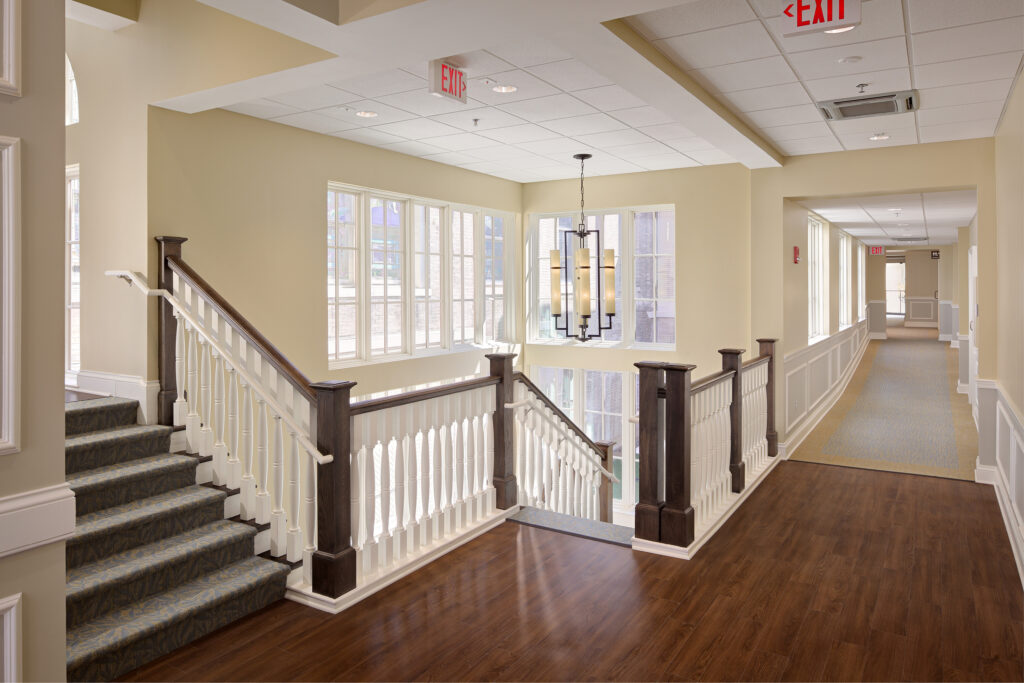November 15, 2019
Johnson Architecture and The Christman Company have earned an East Tennessee Preservation Award for the $10 million renovation of the historic First Presbyterian Church in downtown Knoxville.
The architectural and construction firms combined considerable experience working on historic properties for the project at the 68,000-square-foot church, which was founded in 1792, just one year after Knoxville was founded in 1791.
Knox Heritage presented the award Nov. 14 during a ceremony at the Bijou Theatre. The East Tennessee Preservation Awards annually recognize outstanding individuals, organizations and projects contributing to historic preservation efforts within a 16-county region.

The renovation of First Presbyterian Church by Johnson Architecture and The Christman Company earned an East Tennessee Preservation Award from Knox Heritage at a ceremony at the Bijou Theatre on Nov. 14. The project expanded and preserved the historic structure for modern use. From left: Knox Heritage Executive Director Todd Morgan, Johnson Architecture Founder and President Daryl Johnson, Christman Company Project Executive Nick Lawrence, First Presbyterian Church building committee chair Ginny Morrow, Christman Company Vice President and General Manager Marty Gibbs and Knox Heritage Board Chair Chad Tindell.
“Preservation is as much art as it is science,” said Daryl Johnson, founder and president of Johnson Architecture. “The process involves not just simply restoring a structure back to its original form and materials, but also ensuring that a historic site can be preserved for effective use in the future.”
The Christman Company preserved historic elements during construction, including the iconic rock at a redesigned entrance at 620 State St. The sanctuary, designed by the highly regarded Baumann Brothers of Knoxville, opened in 1903. One surprise emerged during construction – the discovery of a stained-glass window in the back of the sanctuary that had been covered up when the balcony was built in 1920. It revealed itself for the construction of a new door and walkway, and part of it is now permanently visible.
“For First Presbyterian Church to thrive, the building had to be repaired, updated and revitalized,” said Marty Gibbs, vice president and general manager for The Christman Company’s Knoxville operations. “The building had been divided into smaller places and is now unified, while maintaining the existing character and structural and historic integrity. What was best described as a labyrinth became a space with a distinct flow and connectivity to its past while being fully accommodating for its future.”
A second surprise included the discovery of unused granite curb pieces that had been tucked inside a hidden spot between buildings. The newfound stones, which can be used in walls, matched the old construction and were used in the new project, including the State Street entrance. The area where the curb pieces were found also yielded an open space in the center of the various paths to other parts of the building and became the church’s north-south corridor and atrium.
The First Presbyterian Church graveyard is the oldest in Knoxville and is the burial place for James White, the founder of Knoxville who provided the land for the church; William Blount, the governor of the Southwest Territory; and Samuel Carrick, the president of Blount College, which would become the University of Tennessee.
The cemetery was full in 1850, although ashes have been allowed to be scattered in one area. The addition of a columbarium along the cemetery’s retaining wall now allows a place for funeral urns to be stored, another way to connect the present-day church with its historic past.
The new systems throughout the church, including the HVAC system, will help the structure withstand the effects of time. New construction, including an elevated outdoor deck and a reflection garden, respected the existing historic character and compatibility with other church spaces.



